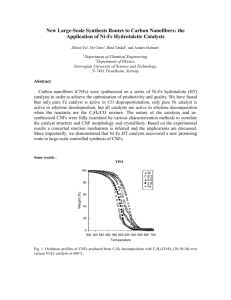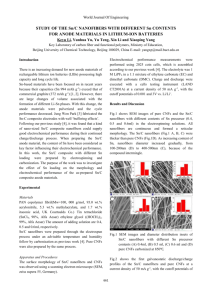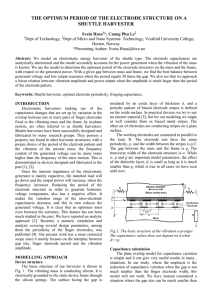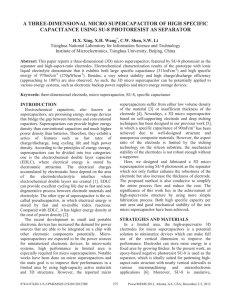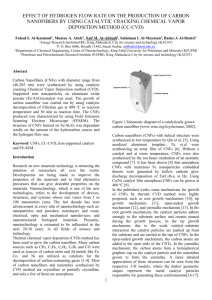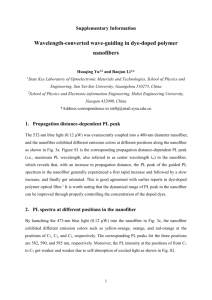APL-supporting Revised-1
advertisement
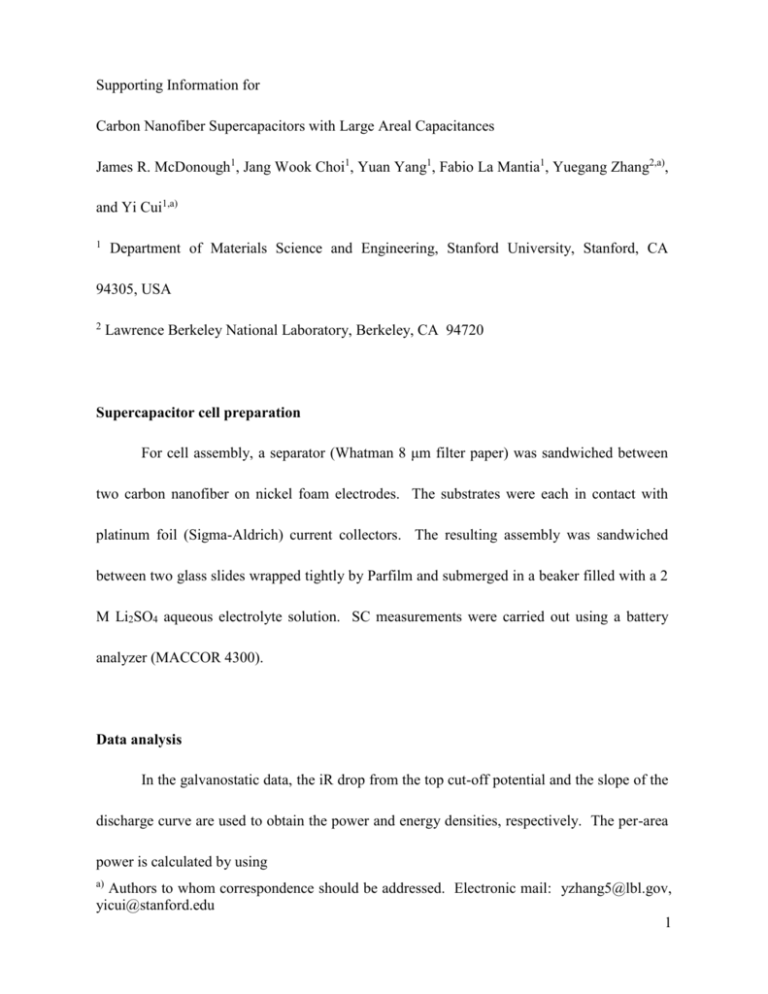
Supporting Information for Carbon Nanofiber Supercapacitors with Large Areal Capacitances James R. McDonough1, Jang Wook Choi1, Yuan Yang1, Fabio La Mantia1, Yuegang Zhang2,a), and Yi Cui1,a) 1 Department of Materials Science and Engineering, Stanford University, Stanford, CA 94305, USA 2 Lawrence Berkeley National Laboratory, Berkeley, CA 94720 Supercapacitor cell preparation For cell assembly, a separator (Whatman 8 μm filter paper) was sandwiched between two carbon nanofiber on nickel foam electrodes. The substrates were each in contact with platinum foil (Sigma-Aldrich) current collectors. The resulting assembly was sandwiched between two glass slides wrapped tightly by Parfilm and submerged in a beaker filled with a 2 M Li2SO4 aqueous electrolyte solution. SC measurements were carried out using a battery analyzer (MACCOR 4300). Data analysis In the galvanostatic data, the iR drop from the top cut-off potential and the slope of the discharge curve are used to obtain the power and energy densities, respectively. The per-area power is calculated by using a) Authors to whom correspondence should be addressed. Electronic mail: yzhang5@lbl.gov, yicui@stanford.edu 1 P = (V2 M)/ [4R] where V is the cut-off potential, R is the internal resistance, and M is the total mass of active electrode materials per centimeter squared. The internal resistance is determined from the voltage drop at the beginning of each discharge: R = ΔViR / 2i ΔViR is the voltage drop between the first two points from its top cut-off. This voltage drop is also referred to as the iR drop. i is the current applied. The capacitance (Ca) per-area is calculated by using Ca = (im)/-[ΔV/Δt] = (im)/-(slope) where i is the current applied, [ΔV/Δt] is the slope of the discharge curve after the initial iR drop, and m is the mass of active electrode materials on one electrode per centimeter squared. Similarly, energy density (E) is calculated using E = 0.5CV2M Where V and M are the same notations as in the power calculation, and C is the measured capacitance. All of the calculations here are consistent with those described elsewhereS1. It is important to note that all per-area calculations presented here are based on geometric device area rather than the total surface area of active electrode materials. We believe that geometric device area is far more important for potential future applications for devices utilizing 3D metallic foam substrates, especially for small devices which have significant area restrictions or for stationary devices in which per-area performance characteristics are far more significant than those related to mass. 2 TEM characterization of carbon nanofibers Figures S1(a) and S1(b) clearly indicate that our thermal CVD growth yields CNFs rather than carbon nanotubes for both small and large fibers, respectively. Also, the particulate Ni catalyst can be seen in Fig. S1(b). Supercapacitor impedance data and capacity retention The Nyquist plot in Fig. S2(a) indicates an internal resistance of 2.5 Ω (X-intercept) and a resistance of 1.5 Ω inside the pores in the CNF structures. The 2.5 Ω result is consistent with the calculated iR-drop resistance in the charging and discharging voltage profiles of our devices [Fig. 3(a) in main text]. These impedance data showing relatively low resistivities further explain our high per-area power and energy densities, as the electrolyte ions can efficiently penetrate the space between adjacent CNFs during charging to contribute to doublelayer capacitance throughout the entire 3D Ni foam network. Device stability is confirmed by high capacity retention and high Coulombic efficiency over 3000 cycles [Fig. S2(b)]. During these cycles the Coulombic efficiency between charging and discharging was nearly 100 % (99.82 % average). These data show that side reactions are negligible and thus capacity fading with cycling is minimal. S1 E. Frackowiak and F. Beguin, Carbon 39 937 (2001). 3 Figure Captions: FIG. S1. TEM images of (a) small and (b) large CNFs confirm a graphitic CNF structure and suggest that the thermal CVD synthesis yields only CNFs, not carbon nanotubes. FIG. S2. (a) Nyquist plot indicating an internal electrode resistance of 2.5 Ω and a resistance of 1.5 Ω inside the pores of carbon nanofibers (CNFs). (b) Capacity retention and Coulombic efficiency over 3,000 cycles for our CNF-based supercapacitor are both high, indicating a stable device. Figure S1 4 Figure S2 5


